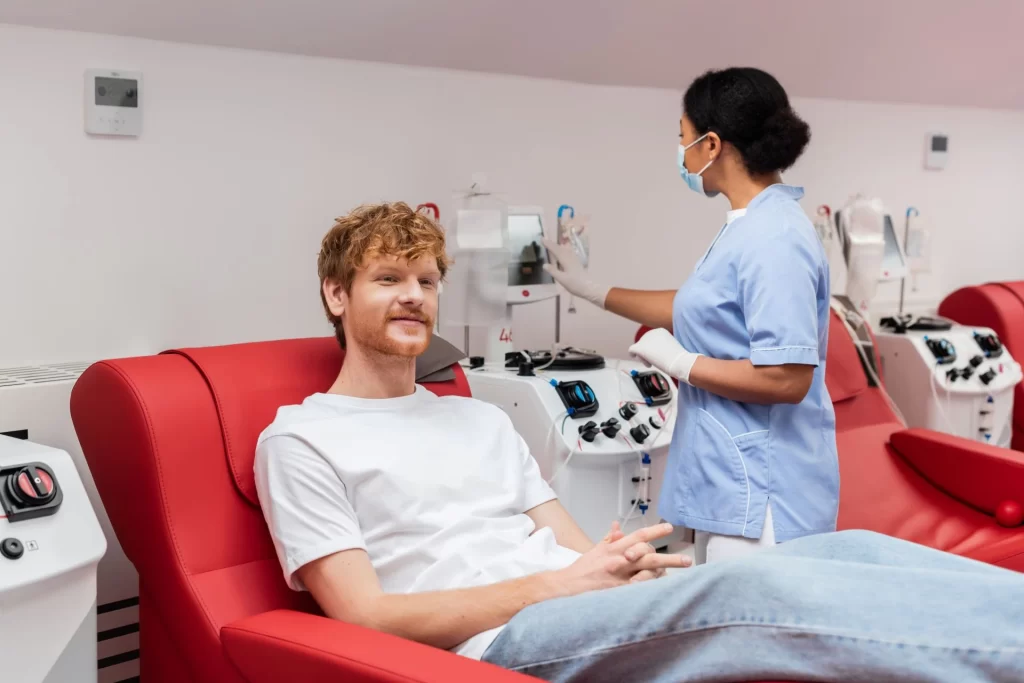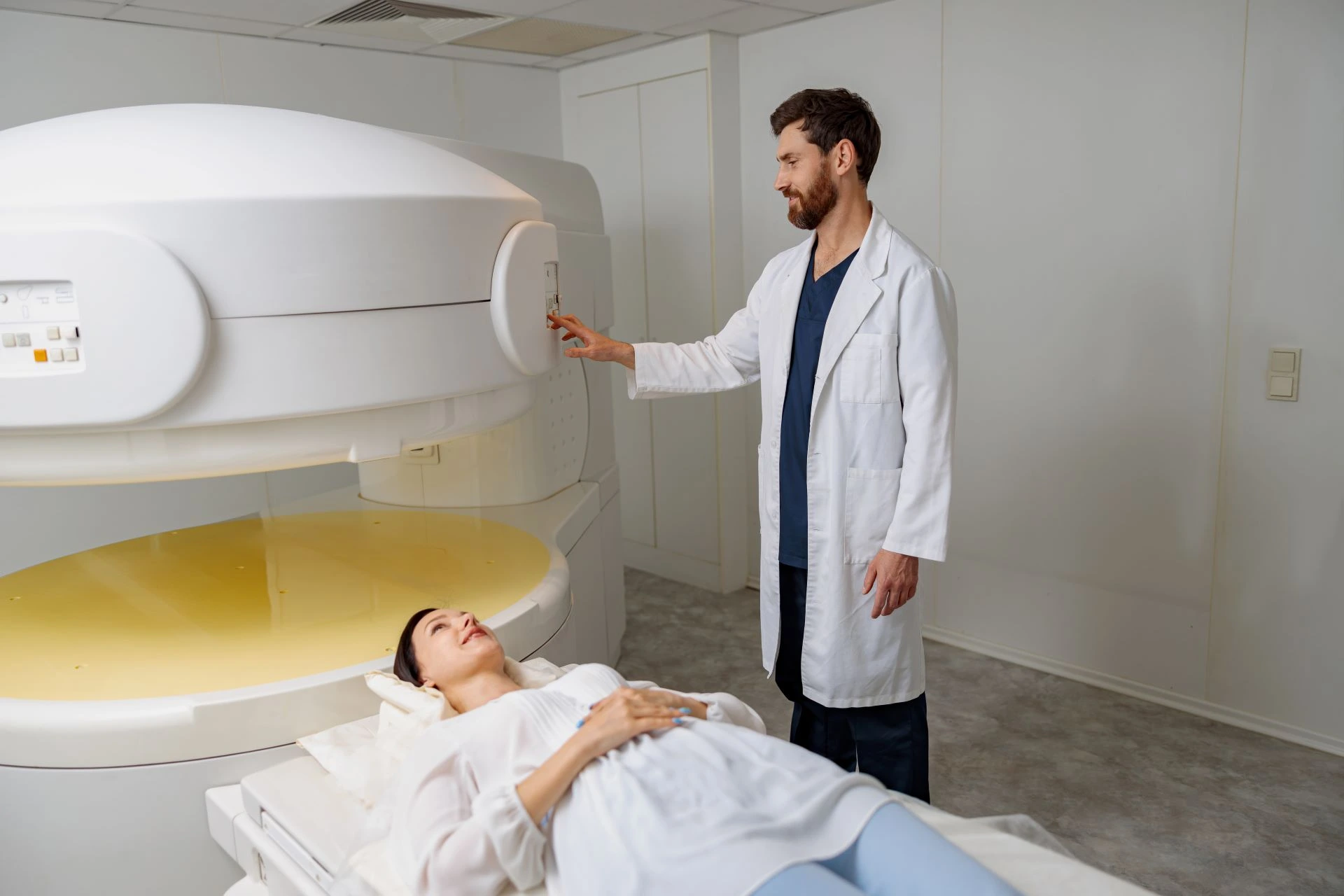Lung cancer is type of cancer that originates in the lungs and it occurs when cells in the lungs gain abnormal mutations, these mutated cells starts multiplying uncontrollably further forming a tumor or a mass. This tumor can further metastasize or spread to other parts of the body.
Key aspects about lung cancer:
a) Leading Cause of Cancer Death: Lung cancer is a leading cause of cancer-related deaths worldwide in both men and women.
b) Smoking as a Primary Risk Factor: It is well known fact that 85% of all lung cancer cases can be attributed to the habit of smoking tobacco. The risk factor of developing lung cancer increases with the number of cigarettes smoked per day and the number of years the cigarettes has been smoked.
Types of Lung Cancer:
a) Non-Small Cell Lung Cancer (NSCLC): This is the most common type of lung cancer and accounts for almost 80 – 85% of all the lung cancer cases diagnosed. It includes several subtypes like adenocarcinoma, squamous cell carcinoma, and large cell carcinoma. Non-Small Cell Lung Cancer (NSCLC) tends to spread more slowly than Small Cell Lung Cancer (SCLC).
b) Small Cell Lung Cancer (SCLC): This accounts for almost 10 – 15 % of all the lung cancer cases diagnosed and spreads more rapidly. It is almost always associated with cigarettes smoking.
What are the different treatment options for lung cancer?
Lung cancer treatment has multiple options and it depends on several factors like type and the stage of cancer, the patients overall health, and their preferences. For lung cancer often a combination of treatment is employed and further is mentioned certain main treatment modalities for lung cancer:
1) Surgery:
Surgery is generally aimed to remove the cancerous mass and tissues surrounding it. It is generally a preferred option for early-stage non-small cell lung cancer (NSCLC). It is generally a preferred when the cancer is localized and has not spread extensively. Rarely, it can be a treatment option in early stage-small cell lung cancer (SCLC). Different types of surgery is mentioned further:
a) Wedge Resection or Segmentectomy: In this type of surgery a small wedge shaped piece or a segment of lung is removed that contains the tumor. This surgery is typically preferred for very small localized tumors or when the patient has very limited lung function.
b) Lobectomy: This surgery involves removal of entire lobe of lung. This is most common type of surgery for lung cancer and is typically preferred when tumor size is little bigger.
c) Pneumectomy: It typically involves removal of the entire lung. This is a preferred option when tumor size is large or centrally located.
d) Lymph node removal: During surgery, nearby lymph nodes are usually removed to check for cancer spread.
It can also be subdivided on the type of surgical approach:
a) Thoracotomy: It is a traditional way of open surgery and involves a large incision in the chest between the chest wall.
b) Video-Assisted Thoracoscopic Surgery (VATS): It is a type of minimally invasive surgery and involves using small incisions through which a video camera is used to guide the surgeon.
c) Robotic-Assisted Surgery: It is similar to VATS but here robotic arms are used for more precision and control.
2) Radiation Therapy:
Radiation therapy uses high energy rays (like X-Ray’s) to kill cancer cells and to further shrink it. It can prove beneficial in different stages of lung cancer.
Type of Radiation Therapy as follows:
a) External Beam Radiotherapy (EBRT): In this radiation therapy, radiation is delivered from a machine outside the body and it it directed toward the tumor. This is the most common technique used against lung cancer.
b) Intensity-Modulated Radiation Therapy (IMRT) and 3D-Conformal Radiation Therapy: This techniques allows more precise targeting of the tumor and minimizes damage to the surrounding tissues.
c) Stereotactic Body Radiation Therapy (SBRT) / Stereotactic Ablative Radiotherapy (SABR): This technique involves delivering high dose of radiation to a small and well-defined tumor in a few session. It is often used in early stage Non-Small Cell Lung Carcinoma. It is also used in isolated metastasis.
d) Stereotactic Radiosurgery (SRS): It uses highly focused radiation beams to treat small tumor in the brain and other areas of the body.
e) Internal Radiation Therapy (Brachytherapy): In this technique the radioactive material is directly places into or near the tumor. This is used less commonly against lung cancer.
f) Prophylactic Cranial Irradiation (PCI): Radiation therapy to the brain used in some cases of SCLC to prevent the spread of cancer to the brain.
It is also classified on the timing of Radiation Therapy:
a) Neo-adjuvant Radiation Therapy: It is given before the surgery to shrink tumor.
b) Adjuvant Radiation Therapy: It is given after the surgery to kill remaining cancer cells.
c) Palliative Radiation Therapy: It is used to relieve symptoms such as pain or airway obstruction in advanced lung cancer.
3) Chemotherapy
Chemotherapy uses chemotherapeutic drugs to kill cancer cells throughout the body. It is common treatment for both NSCLC and SCLC, specifically it can be used as a consolidation treatment prior to surgery or when cancer has spread beyond the lungs. Chemotherapy is generally administered intravenously (through a vein) or orally (as pills). It is further classified on the timing of chemotherapy:

a) Neoadjuvant Chemotherapy: In this the chemotherapy is given before the surgery so as to shrink the tumor and further it is easier to remove.
b) Adjuvant Chemotherapy: In this the chemotherapy is given after the surgery so as to kill the remaining cancer cells and further reduce the risk of recurrence.
c) Chemo radiotherapy: In this the chemotherapy is given along with radiotherapy and it is generally given for locally advances NSCLC or early stage SCLC.
d) Palliative: It is used to slow the growth of cancer and relieve the symptoms in advanced stages.
4) Targeted Therapy:
Targeted therapy uses drugs that specifically targets certain genetic mutations or abnormalities in the genome of the cancer cells that helps cancer cells to grow and proliferate. Targeted therapy has fewer side-effects that conventional chemotherapy and is more selective in nature.
Targeted therapy is primarily used for certain genetic mutations in advanced NSCLC. Genome sequencing is crucial to identify these genetic mutations. It is generally available in oral pills form. Types of chemotherapy and there corresponding drugs are:
a) EGFR mutations: Osimertinib, gefitinib, erlotinib, afatinib, dacomitinib.
b) ALK rearrangements: Crizotinib, alectinib, ceritinib, brigatinib, lorlatinib, ensartinib.
c) ROS1 rearrangements: Crizotinib, entrectinib, repotrectinib.
d) BRAF V600E mutations: Dabrafenib, vemurafenib, encorafenib (often used with a MEK inhibitor like trametinib, cobimetinib, or binimetinib).
e) MET exon 14 skipping mutations or MET amplification: Capmatinib, tepotinib, crizotinib.
f) RET fusions: Selpercatinib, pralsetinib.
g) NTRK fusions: Larotrectinib, entrectinib.
h) KRAS G12C mutations: Sotorasib, adagrasib.
i) HER2 mutations: Fam-trastuzumab deruxtecan-nxki (Enhertu).
j) Angiogenesis inhibitors (target blood vessel growth): Bevacizumab, ramucirumab, necitumumab.
5) Immunotherapy:
Immunotherapy drugs helps the body immune system to recognize and kill the cancer cells. It proves beneficial in advanced cases of NSCLC, and in some cases of SCLC.
Immunotherapy drugs are generally administered intravenously and response to the drug can vary significantly among individuals. Biomarker testing, such as PD-L1 expression levels, can sometimes help predict who is more likely to benefit.
Types of Immunotherapy Drugs:
A) Checkpoint Inhibitors: These drugs block certain protein on immune cells (like T-Cells) or cancer cells that prevent the immune cells from attacking the cancer cells. Examples are:
a) PD-1 inhibitors: Pembrolizumab, nivolumab, cemiplimab.
b) PD-L1 inhibitors: Atezolizumab, durvalumab.
c) CTLA-4 inhibitor: Ipilimumab (often used in combination with a PD-1 or PD-L1 inhibitor).
B) Antibodies-Drug Conjugate: Some Antibodies-Drug Conjugate (ADC), like like tarlatamab-dlle and amivantamab-vmjw, have a targeted component that binds to cancer cells and delivers a cytotoxic payload.
+91-9819274611
Your health is my priority, and together, we can work towards a brighter, healthier future.
— Dr. Ravi Gupta, M.D. (Ayurveda),
Ayurveda Cancer Consultant,
Specialist in Ayurveda and Panchakarma.


